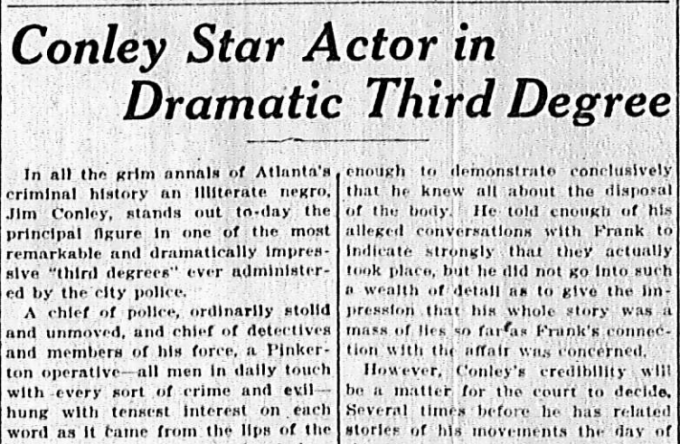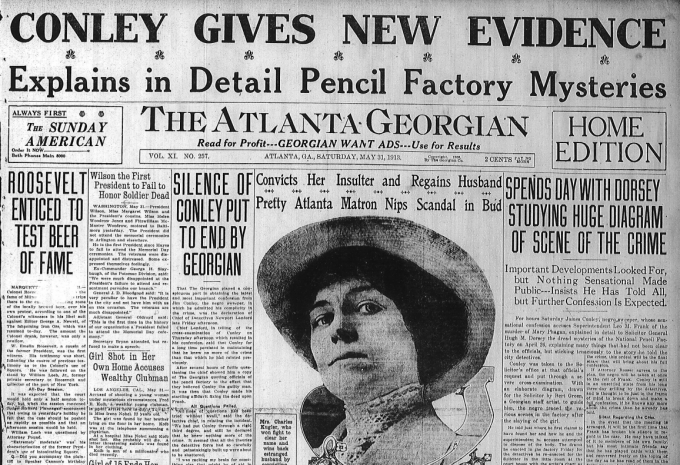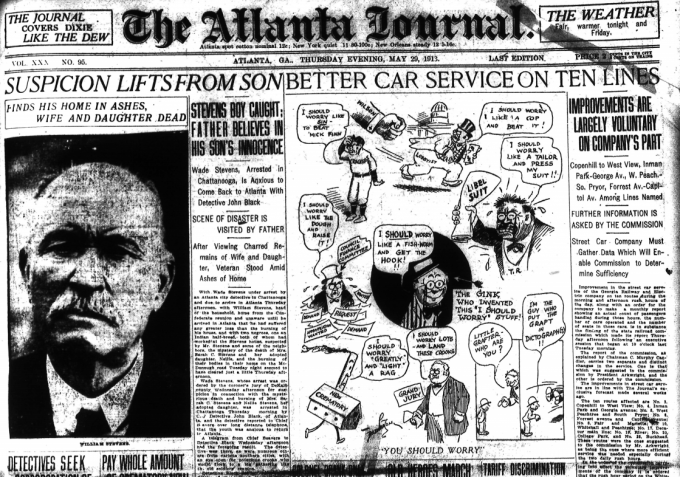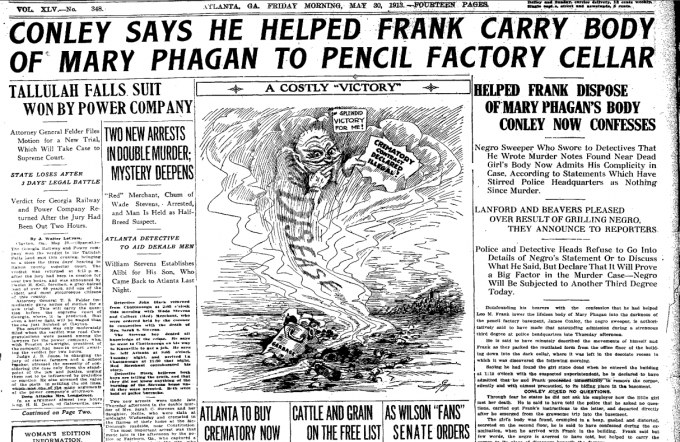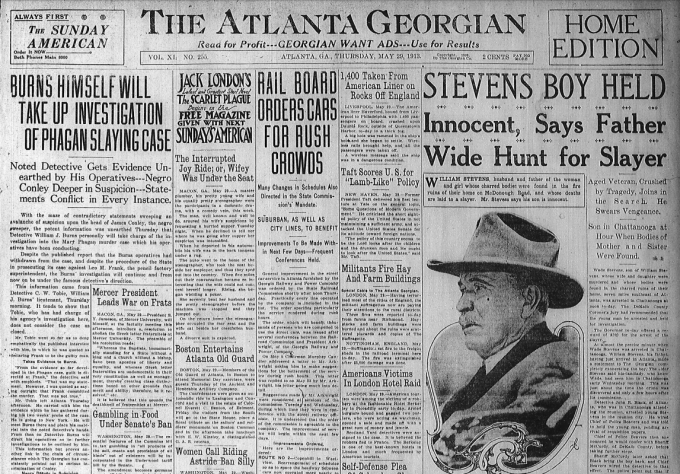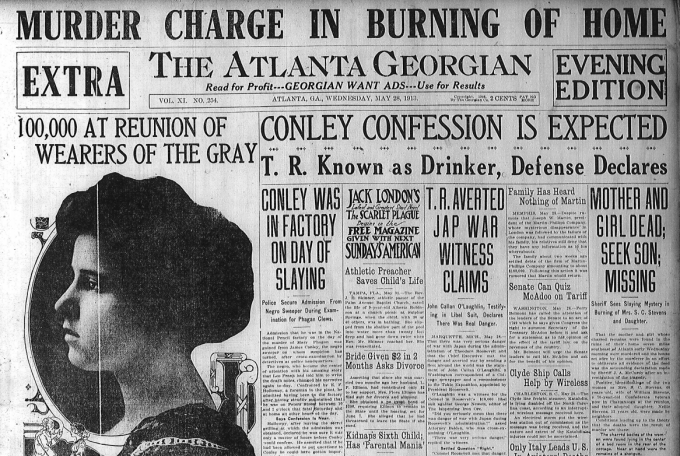Another in our series of new transcriptions of contemporary articles on the Leo Frank case.
Atlanta Constitution
August 9th, 1913
E. F. Holloway, watchman and timekeeper at the pencil factory, whose testimony Solicitor Dorsey riddled on cross-examination, followed General Manager Darley to the stand.
He gave his answers rapidly, making them frequently even before Attorney Arnold had finished propounding his questions. He is a man who looks older than 60, with cold gray eyes and thin lips.
His general appearance causes the lover of Dickens to think that the aged witness had stepped from one of that author’s novels. He became confused upon the cross-fire of the solicitor, and perspired profusely.
Same Rule for All.
He was examined directly by Mr. Arnold.
“Was it a habit of Jim Conley to register as he pleased?”
“No”
“You applied the same rule to him as you applied to all of the help?”
“Yes.”
“Did you ever see Frank pinch him or touch him?”
“Never saw Mr. Frank even touch him.”
“Do you recall a Saturday that you missed since you have been employed with the pencil company?”
“Not a one.”
“Who would relieve you before Lee went to work on Saturday afternoons?”
“Kendrick, the nightwatchman.”
“At what time?”
“Four o’clock.”


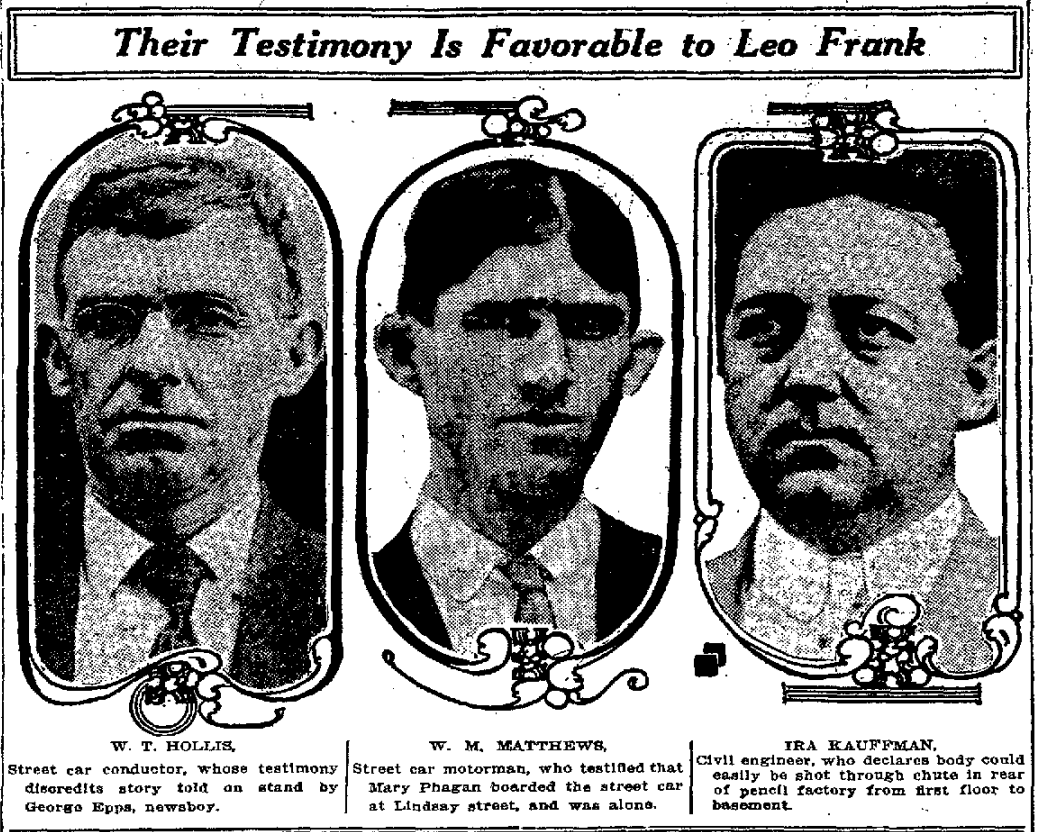
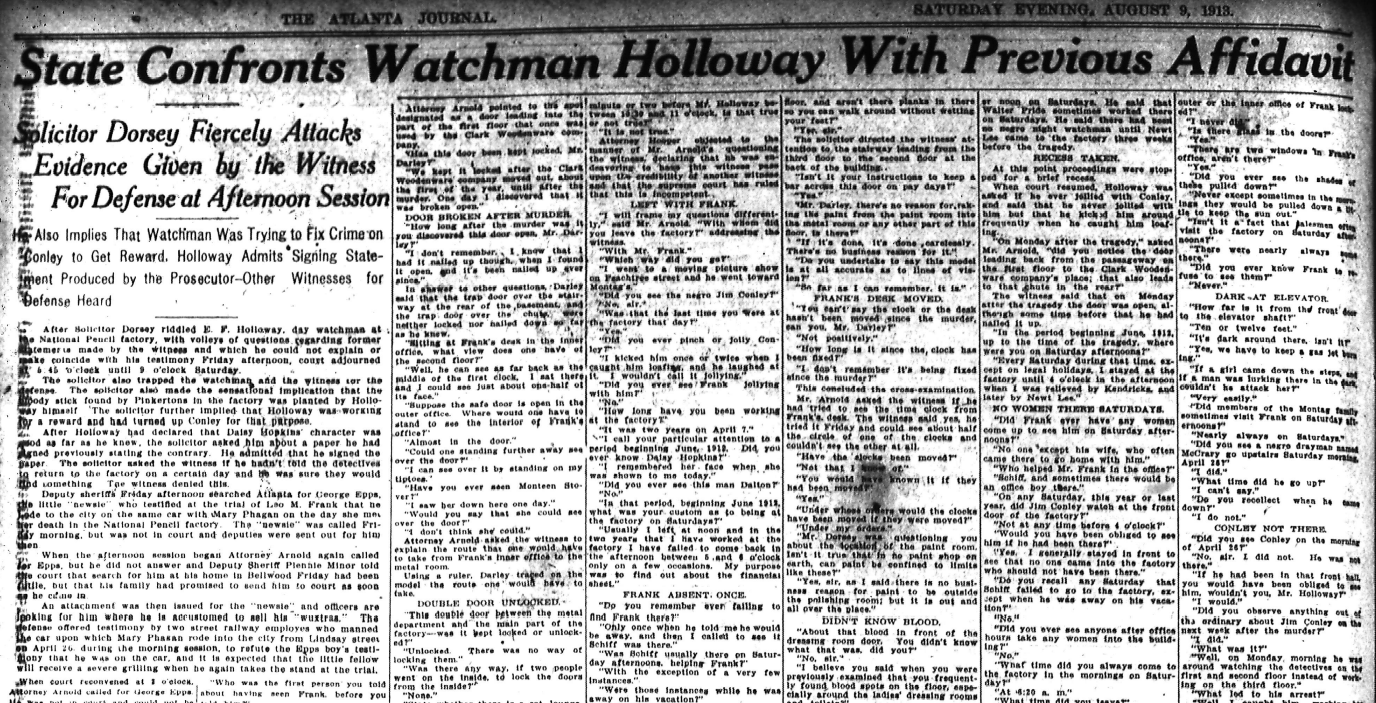
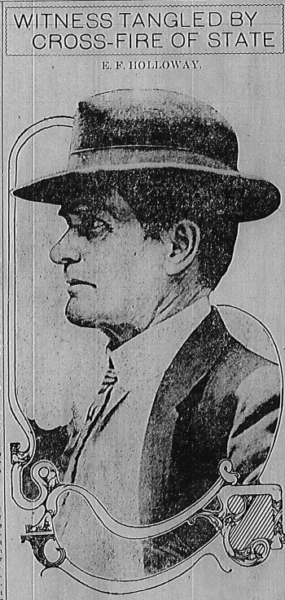

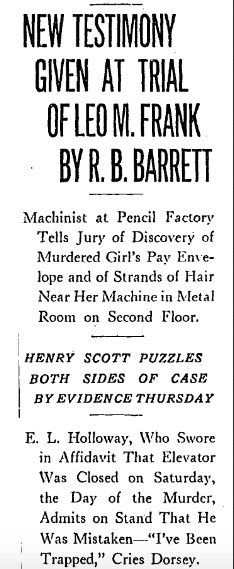

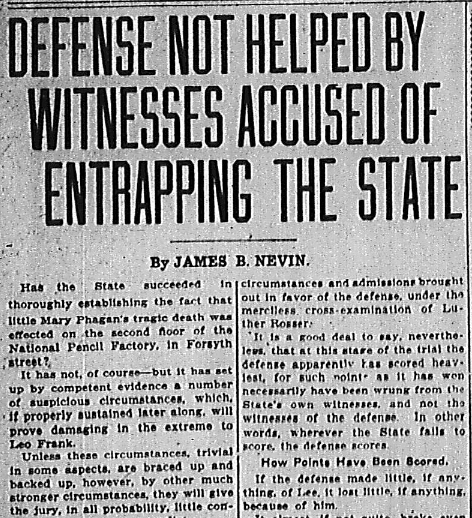
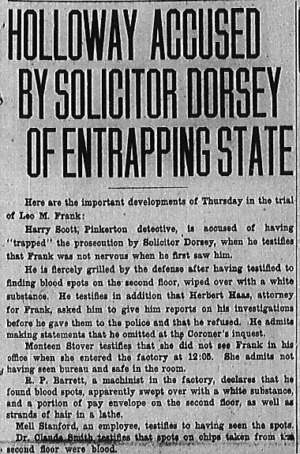
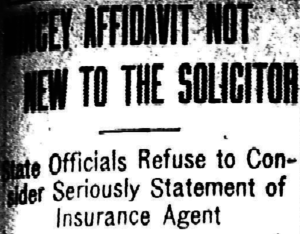 Another in
Another in 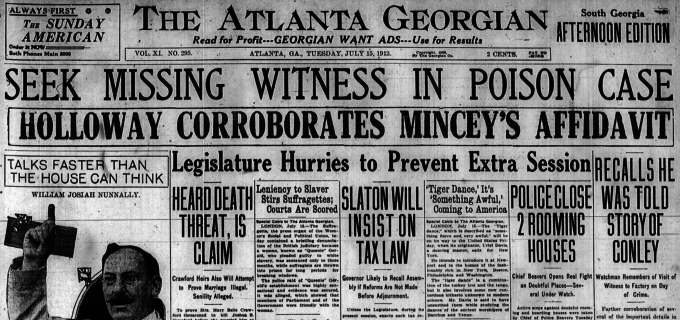 Another in
Another in 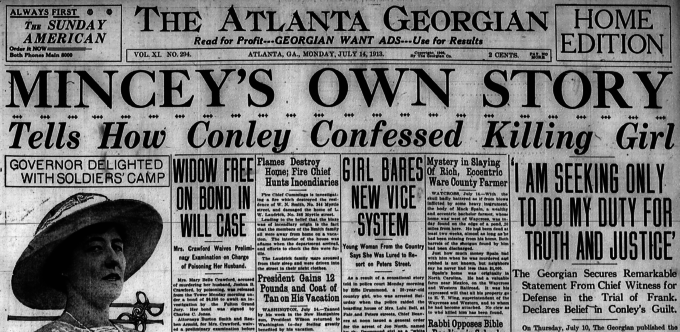 Another in
Another in  Another in
Another in 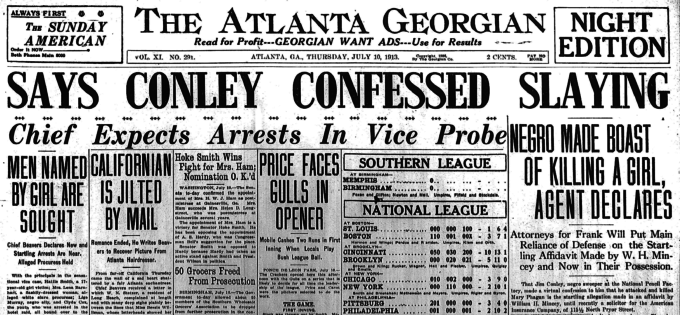 Another in
Another in 